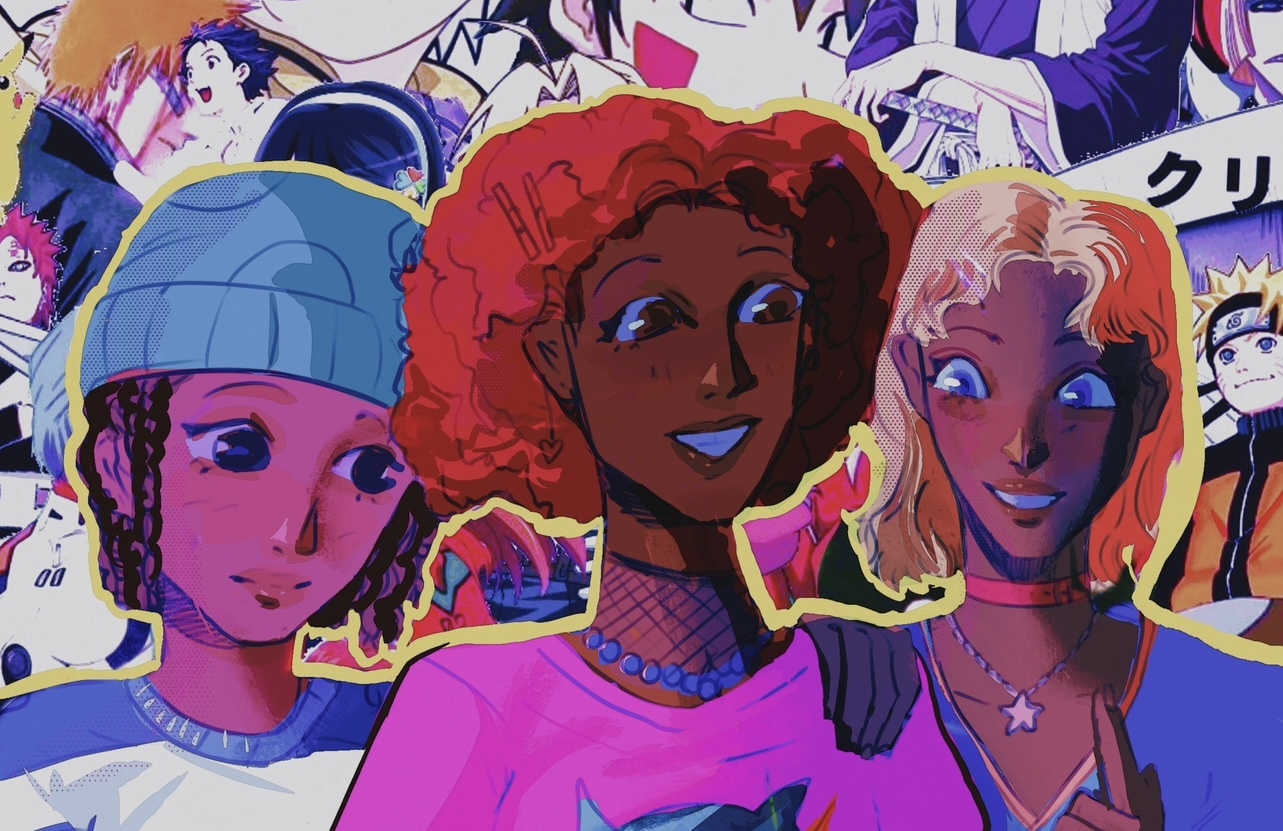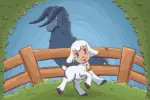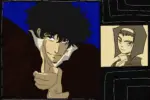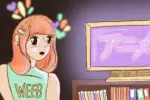Over the past decade, anime has made the transition from a niche subculture to a relatively acceptable interest in the eyes of Western mainstream society. What was once restricted to underground forums on the internet can now be discussed in broad daylight. Influencers on social media make content revolving around it, and various mainstream celebrities have revealed themselves as fans of anime and manga, including actors such as Samuel L. Jackson and Michael B. Jordan, as well as rappers such as Kanye West, Lil Uzi Vert and Megan Thee Stallion. Now, what do all these celebs have in common? It’s okay, you can say it; they’re all Black. Some of the most vocal anime fans in the limelight are of African American descent. Kanye West’s “Stronger” music video is heavily inspired by the seminal anime film “AKIRA,” Lil Uzi Vert owns an impressive collection of cars decorated with anime-style art and references anime in their music and Megan Thee Stallion even cosplayed as Todoroki Shoto from “My Hero Academia.” What is it about anime that Black people find so appealing?
Fascination with Asian culture in the Black community is nothing new. Since the 1970s, Chinese martial arts movies have carved out their own niche among urban Black youth. Young Black men and women were inspired by films like “The Chinese Boxer” (1970), “King Boxer” (1972) and “Fist of Fury” (1972) due to their strong non-white heroes fighting discrimination and oppression through training, hard work and determination. These themes were easy to identify with for many, as the Black Power Movement was in full force. Interest only intensified with the release of 1973’s “Enter the Dragon” starring Bruce Lee and blaxploitation actor Jim Kelly. The hip-hop group Wu-Tang Clan, named after the mythical enemy of the Shaolin, is probably the most well-known example of this intersection of Black and Asian culture today.
When anime was first introduced to mainstream Western audiences in the late 1980s and early 1990s, young people became hooked, and Black youth were no exception; they latched on to anime for some of the same reasons they fell in love with kung fu films. Many of the most popular anime both in the 90s and today are battle anime, also known as fighting anime: stories in which an underdog trains himself to become the best fighter he can be while gaining friends and fighting fantastical foes. Popular examples include “Naruto,” “My Hero Academia,” “One Piece” and of course, “Dragon Ball.” Since the first Black slaves were brought to British America in 1619, African Americans have been treated as second-class citizens in their own country, so stories about underdogs fighting the status quo and winning when the odds are stacked against them resonate with Black audiences.
Anime has become a part of modern African American culture because Black American culture has played a notable role in shaping the anime industry, making it a mutually beneficial cultural exchange. This is especially true with Black music. Many anime fans will say the best anime ever is “Cowboy Bebop,” a 1998 series that combines the genres of neo-noir and space western, which itself combines Westerns with adventures in outer space. “Bebop” follows a dysfunctional group of bounty hunters traveling through the solar system in the year 2071; its colorful cast of characters, high-quality animation and intense action scenes create an innovative series with an oddly “Western” feel, making it a perfect introduction to anime for newcomers. But it’s the jazz soundtrack, with its bombastic big band and its moody smooth jazz ambiance tracks, that elevates the series into a league of its own for many viewers.
Directed by Shinichirō Watanabe, the same auteur, 2004’s “Samurai Champloo” features a samurai, a former barmaid and a Ryukyuan swordsman going on a quest through Edo-period Japan searching for the barmaid’s missing father, discovering things about themselves and each other along the way. One standout storyline deals with discrimination and cultural oppression experienced by the people of the Ryukyuan Islands, an all-too-familiar feeling for Black people around the world.
In addition to Watanabe’s excellent writing and Studio Manglobe’s well-executed animation and fight choreography, “Samurai Champloo” is the poster child of hip-hop-influenced anime; its soundtrack is produced by Tokyo producer Nujabes and African American artist Fat Jon, and it became a major influence of the lo-fi hip hop movement of the 2010s. Other anime with hip-hop-inspired music and designs include “Megalobox,” “Michiko & Hatchin,” the epic mecha series “Gurren Lagann” and Watanabe’s most recent show “Carole & Tuesday,” which features several Black main characters, songs from Denzel Curry and Thundercat and themes of racism and immigration.
The almost symbiotic relationship African American culture has with anime has caused Black fans to become some of the anime community’s most vocal members. However, as the online anime community continues to expand, and more people with diverse opinions become involved, a concerning minority has emerged. While the objectification of female characters and pedophilia among certain fans are commonly discussed issues in the anime and manga fandoms, racism against Black people is not a topic that is frequently addressed. Black cosplayers are often told that they cannot dress up as anime characters, many of whom have light skin, and Black voice actors in English dubs are harassed by fans for supposedly “ruining” the cuteness and purity of their favorite characters. In addition, not all anime have positive depictions of Black people and Black cultures like the ones mentioned above. Although the anime community is not perfect, it is a place where many people, including Black people, have found friends and a community. Community is important for all people, but for minorities, it can be lifesaving. It is important for the anime community to come together to support and defend Black artists, writers, cosplayers and fans from racism, as well as recognize that diversity within the fandom, and in anime itself, is a strength and not a weakness.















